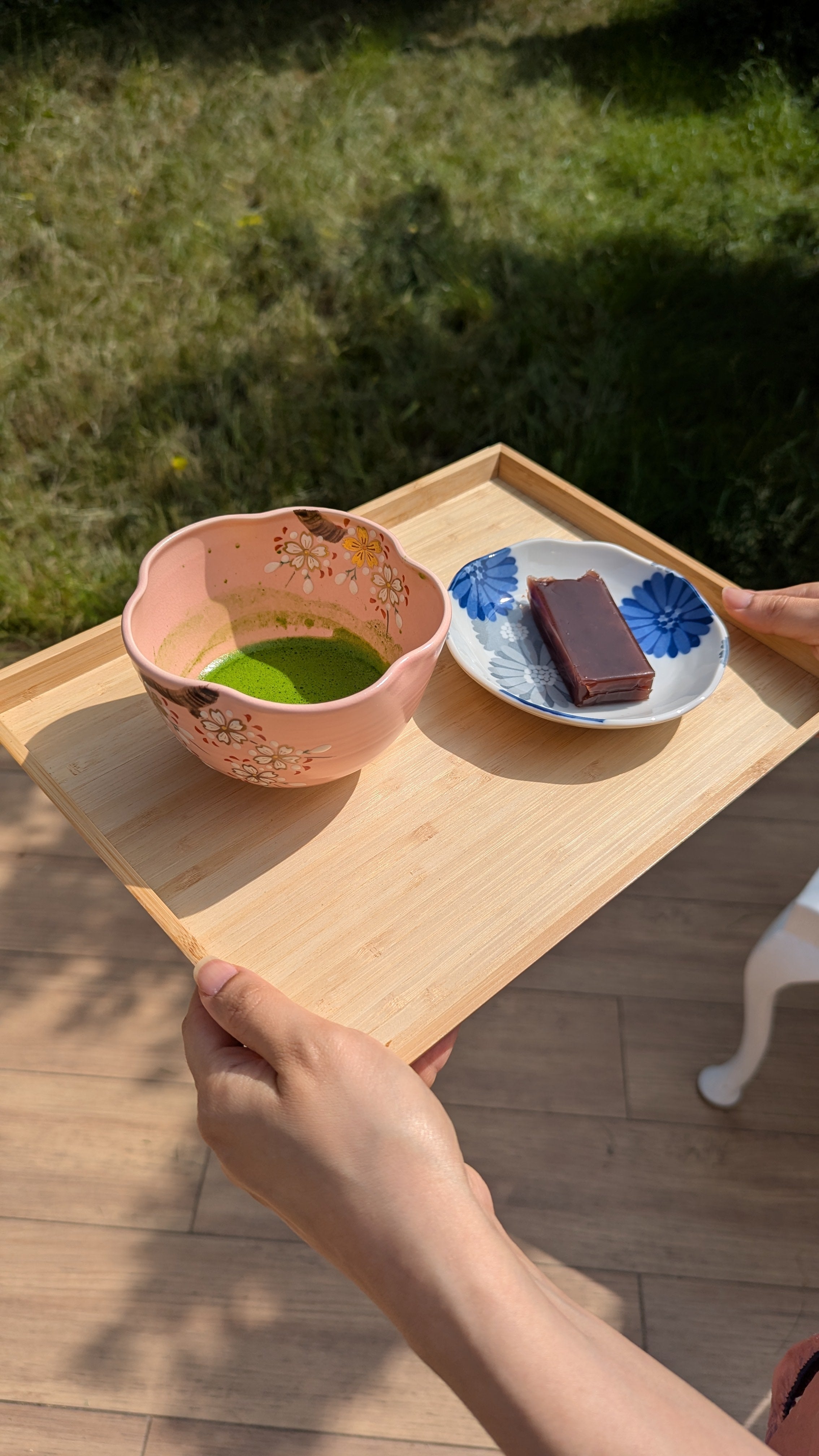How to Prepare Matcha as Usucha: A Japanese Ritual
Matcha often shows up as a latte where it is blended with milk, sweeteners, and served over ice or steamed milk. While that is a pleasant way to enjoy it, high-quality matcha doesn’t need the extra additions. The traditional way to appreciate matcha is simply, with hot water in a 'thin tea' or 'usucha'.
Usucha, or “thin tea,” is a traditional style of matcha preparation that’s light, frothy, and refined. It’s a way to savour good matcha in its purest form.
What is Usucha?
In Japanese tea practice, there are two main ways of preparing matcha: koicha (thick tea) and usucha (thin tea). Usucha uses a smaller amount of matcha and more water, creating a lighter, airy drink with a smooth foam on top. It’s approachable, fresh, and an excellent way to experience the layered flavours of high-grade matcha.
This is especially important because not all matcha is created equal. Lower quality matcha is often blended into lattes or sweets, higher quality matcha is designed to stand on its own, needing no milk or sugar to mask it.
Choosing the Right Matcha
When making usucha, choosing a high-quality, ceremonial-grade matcha is essential. Its bright green colour, fine texture, and naturally sweet, umami-rich flavor are meant to be enjoyed without additions. Good matcha reveals depth and nuance: a soft sweetness and delicate flavours which are not overly bitter. The higher the quality of matcha the easier it is to drink on its own as there is no way to mask impurities with milk or sweeteners.
Different matcha from different Japanese regions can give you a different experience but key things to look for in choosing the right matcha are colour, harvest time and being stone-milled. Cultivated variety is also important as each 'cultivar' has different flavour tones however most matcha doesn't tell you this information. We put this on all our matcha so you know exactly where it has come from.
Usucha is such a beautiful way to enjoy high quality matcha. Its lighter preparation lets those delicate flavours come forward without distraction.
What You’ll Need:
-
2–3 grams of high-quality matcha (about 2 heaping scoops with a chashaku or half a teaspoon )
-
60–90 ml of water at 80°C (176°F)
-
A chasen (bamboo whisk)
-
A tea bowl (chawan)
-
A fine sieve (if you have one)
Preparing Usucha
1. Sift the Matcha
If possible, sift 2–3 grams of matcha into your bowl. This in't essential but it breaks up any clumps and helps create a smooth, even foam.
2. Heat the Water
Bring fresh, filtered water to a boil, then let it cool to around 80°C (176°F). Water that’s too hot can scorch the matcha, making it taste overly bitter!
3. Add Water to Matcha
Using a 1:30 ratio, pour about 60–70 ml of hot water into the bowl with your matcha.
4. Whisk
With a chasen, whisk the matcha briskly in a “M” motion until a fine, even froth appears. Aim for a light foam with small, even bubbles. This usually takes around 20–30 seconds.
5. Pause and Enjoy
Take a moment to appreciate the vibrant colour, the fresh scent of tea, and the quiet ritual of preparing something with care. No need for milk, sugar, or syrups. Just matcha and water, as it’s been enjoyed for centuries.
Sweetness, in Balance
Traditionally, rather than adding sweetness directly to the matcha, it’s paired with a small, delicate confection like wagashi. These Japanese sweets, made from ingredients like sweet bean paste or soft mochi, offer a gentle contrast to the tea’s natural character. Rather than adding sweetener to the matcha itself, having the wagashi first sets the palate before adding matcha.
It’s a thoughtful approach: keeping the matcha pure while enjoying a touch of sweetness alongside, rather than within it. The umami flavour of the tea and the mellow sweetness of a wagashi create a balanced, harmonious moment.
Let's celebrate Usucha
Making usucha is about more than just preparing a drink. It’s about slowing down, noticing the details, and appreciating the simplicity of good matcha made well. And while lattes have their place, I promise when you get high quality matcha it’s worth stepping away from the milk and sweeteners to experience matcha’s natural character on its own terms.
